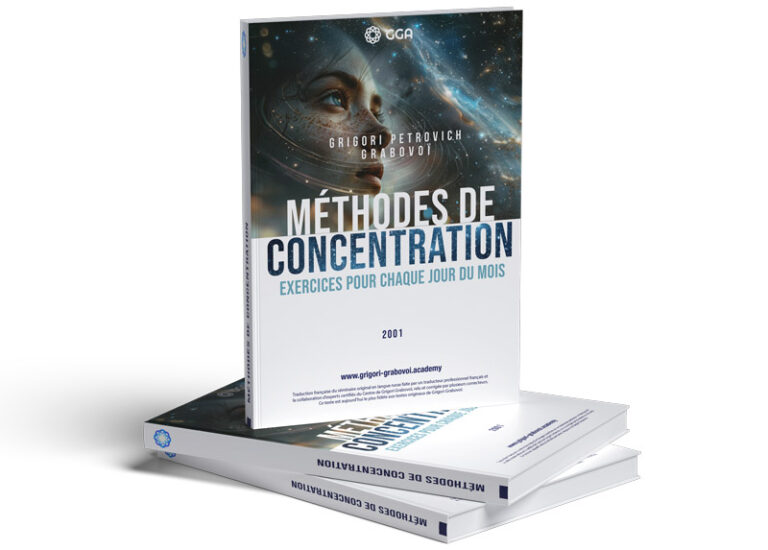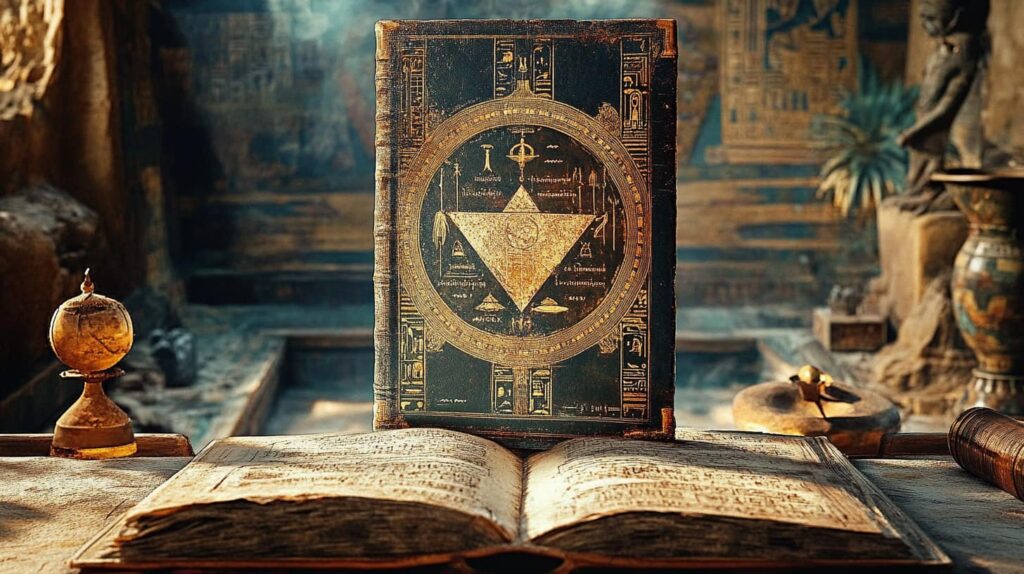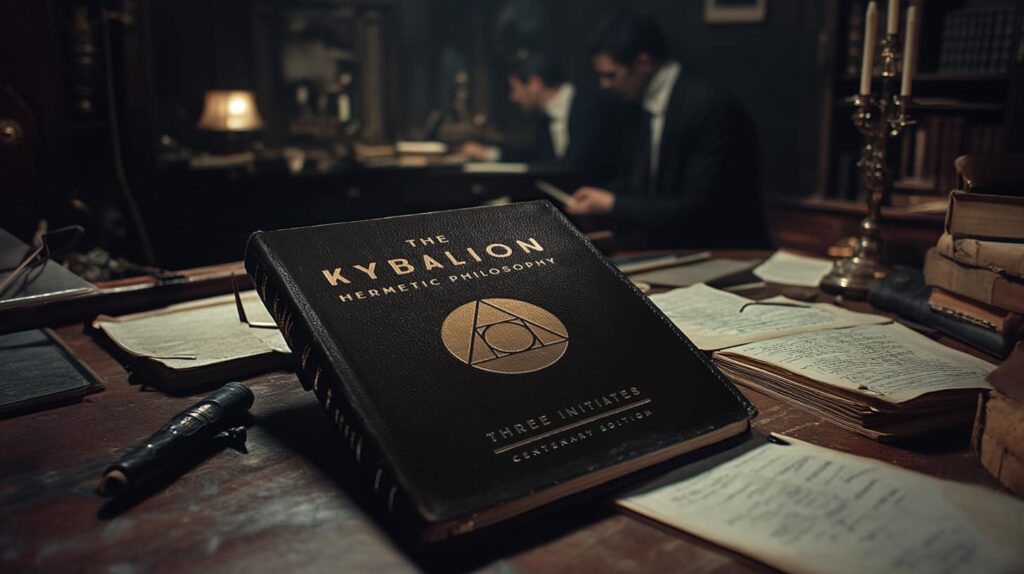What is the spirit according to Grabovoi? An exploration of the universal source
In this article
The spirit according to Grabovoi: a singular definition
In his teaching, Grigori Grabovoi distinguishes the spirit from the soul and consciousness. For him, the spirit is an active force that links the human being to the universal organisation of reality.
He describes it as a vector for perception and actionIt is an essential part of the human structure, enabling us to interact with the world through subtle levels of information.
The soul is presented as a timeless, unalterable essence, while the spirit is a dynamic interface, a system that captures and organises information perceived by the conscious mind. The mind thus provides access to higher knowledge and the ability to influence matter, in accordance with universal principles.
Let's take a journey together through time and ancient philosophies to see whether these considerations of mind and reality might have some fundamentals in common.
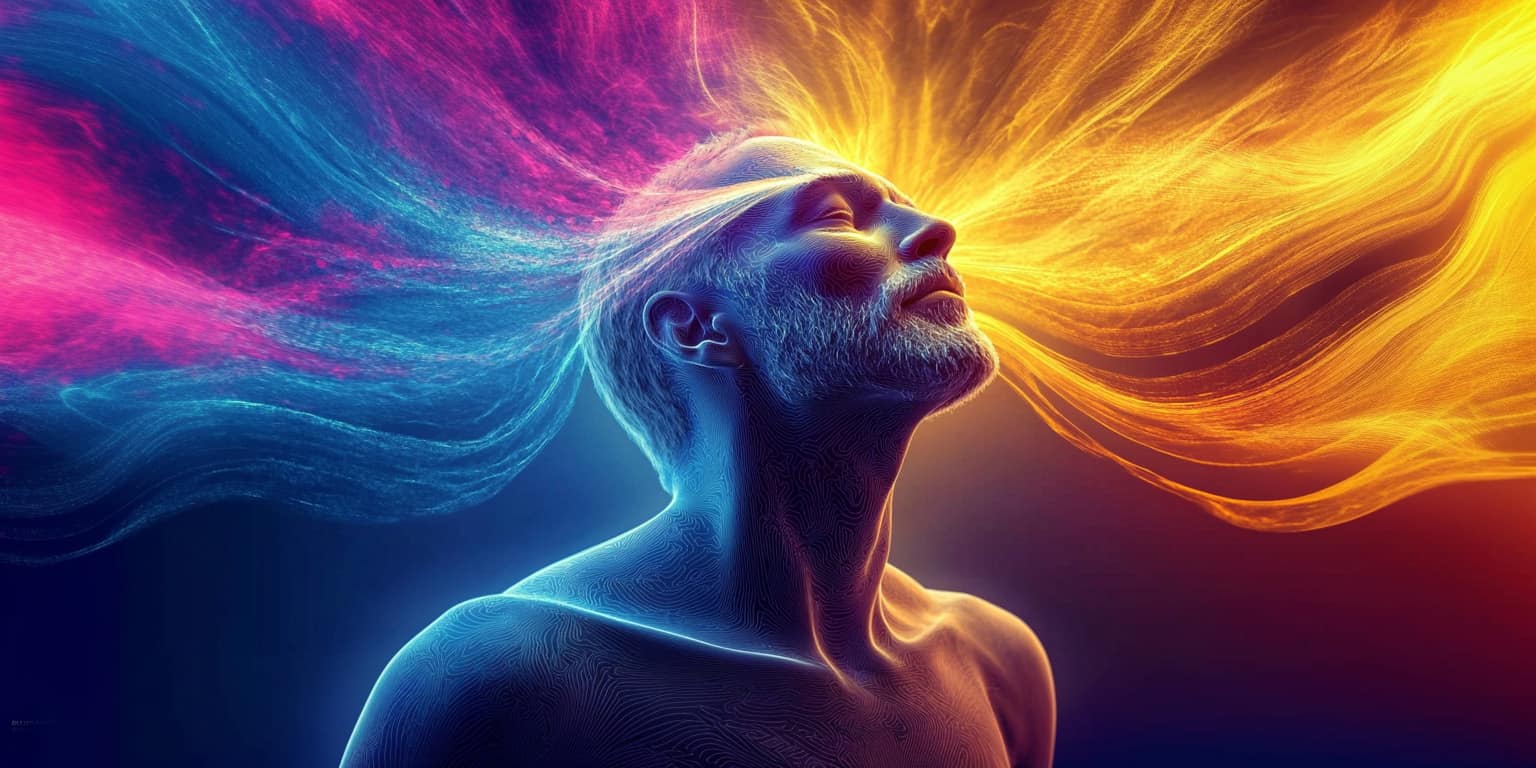
An infinite field of perception interacting with reality
For Grabovoi, the mind is not limited by ordinary physical constraints. It functions as a field of interaction with reality, capable of extending beyond time and space. The structure of the human mind is designed not only to capture and organise information from the outside world, but also to transmit signals in return, thereby influencing the course of events.
His teaching emphasises that the spirit of man and the divine Spirit are fundamentally linked. This interconnection enables human beings to access a broader understanding of reality and to interact directly with the processes that organise the world. Through specific concentration practices, it is possible to refine this interaction and structure the processes leading to concrete results.
Towards a consciousness-based mastery of reality
One of the central aspects of Grabovoi's teaching is the idea that the human mind can be educated and refined to become a genuine instrument for the conscious creation and control of reality. This is not simply positive thinking, but a precise methodology that enables us to harmonise events according to a defined objective and our ability to centre ourselves in harmony with the whole system of reality.
Concentration exercises, particularly those proposed in the "Concentrations for every day of the month" by Grigori Grabovoi.They play a key role in this discipline. They help to focus the mind on specific points of reality and transform our relationship with the world, with global consciousness and with creation. The number series serve as vibratory keys, facilitating the mind's alignment with the informational structures of the world.
A commitment to collective transformation
In Grabovoi's teachings, mastering consciousness and influencing reality are not tools to be used in isolation or in a purely individualistic way. He insists on a vision in which each personal transformation contributes to a wider equilibrium.
As a result Concentrations of the day. are not just a way of improving well-being or achieving personal goals, they are thought of as a profound process of alignment, of readjusting reality towards universal harmony.
The underlying idea is that every thought, every intention expressed in the world influences not only the individual who expresses it, but also all the informational structures that make up our collective environment. Practising these exercises with an intention aligned with the harmony and development of all would not only amplify their scope, but also reinforce their effectiveness.
In this sense, ethical responsibility is at the heart of this approach: those who learn to structure their consciousness become active players in human evolution, and not simply individuals seeking personal gain.
Whether you like it or not, you have a permanent impact on the world and the world on you. Let's illustrate this idea so that we understand its contours: imagine a teacher who, every morning, practises the Concentrations of the day. by directing her thoughts towards clarity and benevolence, harmony in her interactions with her pupils. Every day, his patience and attitude change imperceptibly, influencing the dynamics of his class. A pupil in difficulty, often anxious, perceives this more soothing atmosphere and develops a form of admiration for this teacher whose spirit shines through. There begins to be a dynamic between the two that becomes the driving force behind a host of sensitive waves in the pupil.
These changes, seemingly insignificant and unknown to the teacher, enable the young person to unlock an understanding and a relationship with others that connects and develops his own Spirit. Months later, the confidence and invisible link created by the teacher's attitude is capable of changing his own attitude and even his career path and choices.
The enigmatic TV series The OA has touched thousands of fans, perfectly illustrating the powerful links between people, time and space.
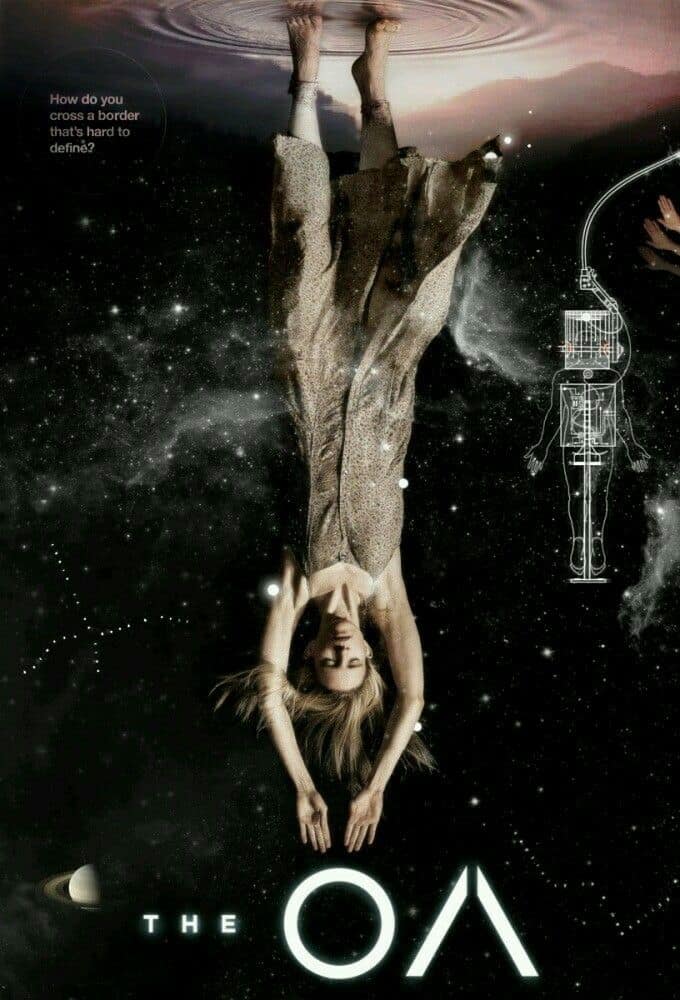
This illustration highlights a fundamental principle: every thought we have is reflected in our actions, changing the course of events, even if it is imperceptible to us. By regularly practising Concentrations of the day.In this way, each of us can become an active link in a network of subtle interconnections, influencing the world far beyond what we perceive it to be. In this way, the mastery of thought becomes not only a path of personal transformation, but also a tangible commitment to a world of peace and shared happiness, to the eternal life of the being who has risen to the highest level of consciousness.
Millennia-old currents resonate with Grabovoi's teaching on the spirit
Neoplatonism
The idea that the human mind plays a fundamental role in structuring reality is not new. It has echoes in many philosophical traditions, notably in the neoplatonism.Neoplatonism was a philosophical movement born in Alexandria in the 3rd century, with Plotinus as its central figure. Inspired by the teachings of Plato, Neoplatonism developed a vision of the world in which the spirit (or Nous) is the primary and creative element, organising all forms of reality.
For the Neoplatonists, material reality is only a reflection of a higher immaterial world.It is structured by principles that are intelligible and accessible through intuition and contemplation. This vision is based on a hierarchy of being: at the top is the One.It is an absolute and indefinable source from which emanate the spirit (pure thought), then the Soul, which links the intelligible to the sensible world.
This diagram shows a striking similarity with the teachings of Grabovoi. He too believes that material reality is an extension of a higher field of informationstructured by consciousness. However, where Neoplatonism insists on a spiritual ascent to return to the One.Grabovoi proposes an approach that does not lie solely in the spirit: instead of discarding matter in favour of the immaterial, we can interact with these informational structures and reorganise reality through the concentration and power of our thought.
The parallel goes even further.
For Plotinus, the human intellect does not simply produce thoughts: it reflects and actively participates in the universal logic that underpins all existence. So what we think has an effect on our reality.
In a similar but more detailed way, Grabovoi explains that our consciousness is not simply a spectator of reality, but an active element in its construction. For him, this ability to influence reality is a universal law, not just a mystical, philosophical or moral phenomenon.
"Plotinus and the mysteries of the Inner Life
Lecture by Thierry Adda, philosopher
and Chairman of Nouvelle Acropole France
A clear divergence: interaction with matter
However, there is a major difference between the two approaches. In the Neoplatonic vision, matter is often perceived as a veil of illusion, an obstacle to the full realisation of the spirit. Grabovoi, on the other hand, does not seek to detach himself from matter. He sees it as a dynamic field of expression of consciousnesswhich we can sculpt through our intentions and concentration exercises.
In short, where Neoplatonism advocates a return to the immaterial source, the spirit freed from the body and the world below, Grabovoi explains that there is a need to return to the immaterial source the possibility of infinite evolution within physical reality itself. This distinction is fundamental: from contemplation of the divine, we move on to action on the world.
In this way, Grabovoi's teaching can be seen as a reflexive evolution nourished by Neoplatonist philosophy.An approach that reconciles spirituality and interaction with the tangible, opening up unexplored dimensions of human potential and our understanding of the world. An approach that reconciles spirituality and interaction with the tangible, opening up unexplored dimensions of human potential and our understanding of the world.
Hermeticism
There are much closer links between the teachings of Grigori Grabovoï and Hermeticism.
Thehermeticism is a philosophical and spiritual tradition that has its roots in Greco-Egyptian antiquity and developed around the teachings attributed to Hermes Trismegistus. This mythical character, symbolising an intermediary between the divine and the human, served as a common name for disparate authors from different times and places who wished to link together a body of knowledge aimed at revealing the hidden laws of the universe. This body of texts, called Corpus Hermeticumlays the foundations for a way of thinking in which the mind structures reality and where knowledge gives man access to creative power.
Look closely at the cause you want to manifest and you will certainly see its effect.
Thehermeticism has had a considerable influence on Western thought, spanning the centuries and impacting many fields, from philosophy and science to alchemy and theology. His reputation has oscillated between admiration and rejection, depending on the period, but his influence remains undeniable.
Its impact during the Renaissance: the quest for absolute knowledge
This fascinating trend is as full of mysteries and questions as it is of myths and explorations: of physics, chemistry and medicine through alchemy, the occult sciences and magic.
The first texts emerge between the 15th and 16th centuries, They are marked by a search for universal wisdom and mastery of cosmic laws.
Their esoteric nature (reserved for those who possess the keys to understanding them) has contributed to a craze in intellectual and spiritual circles.But they were also rejected by the dominant currents of thought. As a result, many people have studied these paths in secret and sometimes in solitude.
During the Renaissance, between the 15th and 16th centuriesHermeticism has spectacular expansion. Rediscovered by humanists such as Marsilio Ficino and Giovanni Pico della Mirandola,It has become a source of inspiration for scientists and philosophers seeking to understand the world around them a unified knowledge of the world.
This revival is taking place at a time when we believe that the nature, mathematics and spirituality are interconnected. Major figures such as Giordano Bruno see Hermeticism as a means of going beyond religious and scientific dogma to access a broader understanding of the cosmos.
Hermeticism and science: an ambivalent relationship
During this period, Hermeticism influenced a number of pioneers of modern science.These were the minds that shaped our history with major discoveries for our civilisation.
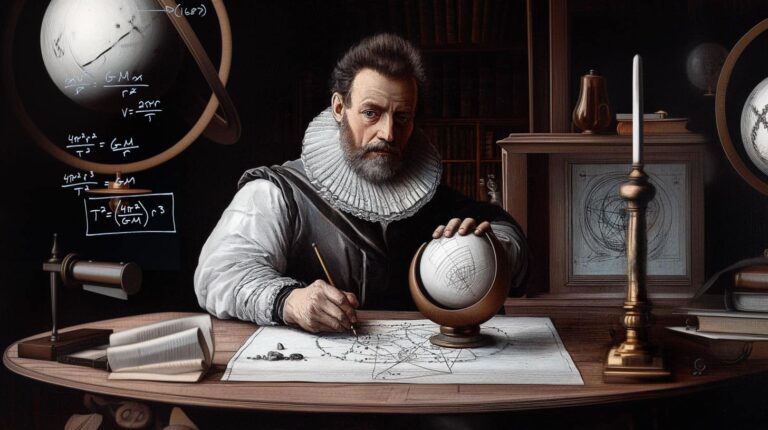
Johannes Kepler
A celebrated astronomer and mathematician, he incorporated hermetic notions into his understanding of planetary movements. Against the established notions of the 16th-century scientific community as a whole, he unravelled the secrets governing the movements of the planets in their elliptical orbits around the Sun. He explored a mathematical and harmonic order, seeking a comparison with the field of music and his own mathematical harmonies, continuing the ancient work on the harmony of the spheres of Pythagoras.
Documentary-fiction "The Cosmos according to Kepler"
par Christian Twente
Isaac Newton
While developing his laws of gravitation, he was deeply passionate about alchemy and Hermetic texts. The greatest genius of all time spent more than half his life secretly exploring theories and experiments that were forbidden in his day, to the extent that they remained hidden from the general public for years even after his death.
"The crazy story of the greatest genius of all time: Newton the last of the magicians".
by Balade Mentale
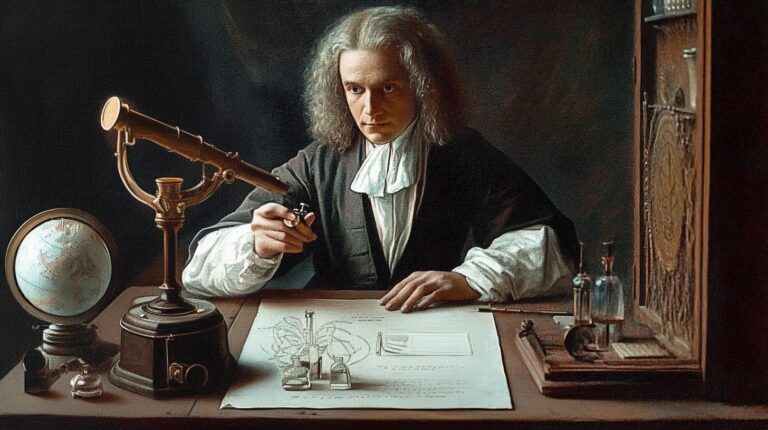
These geniuses demonstrate that their understanding of and curiosity about what was considered occult and unorthodox developed in them an amplified character and vision, at the very heart of life itself, that was truly breathtaking.
With the advent of modern science in the 17th century,Hermeticism is losing ground toempiricism and the so-called scientific method. His intuitive and symbolic approach gradually became discredited.
From underground to modern revival
From the 18th to the 19th century, Hermeticism remained in the background, mainly cultivated in esoteric circleslike those of the Freemasons and secret societies. Today, Hermeticism continues to be of interest to researchers in history of science, philosophy and spirituality. It is sometimes reinterpreted from the perspective of modern science, in particular quantum physics,which explores similar notions about the nature of reality and the role of the observer.
Among the general public,It is enjoying a resurgence of interest, particularly through books such as The Kybalion published in 1908 in Chicago.
Hermeticism remains a fascinating trend, oscillating between admiration and scepticism. it continues to fuel a a profound reflection on the nature of reality and the power of consciousness.
One of the fundamental principles of Hermeticism is clearly echoed in the teachings of Grigori Grabovoi, its maxim:
🜁 "All is Spirit,
the Universe is Mental."
This law, known as the Principle of Mentalismasserts that all reality rests on a field of primordial intelligence, and that human thought can directly influence the material world. This idea is reminiscent of Grabovoi's vision that human consciousness interacts with a universal information field.These enable us to structure and transform reality using specific methods, such as number series and concentration exercises.
Universal laws that guide the creation of reality
Hermeticism is based on seven principles that are supposed to govern the interaction between the mind and the world. Several of these laws have obvious parallels in Grabovoi's approach:
The Principle of Vibration
everything moves, everything vibrates."
In this vision, everything in the universe is in perpetual motion, including thought.
With his number series, Grabovoi suggests tuning our minds to specific vibrations, modulating our consciousness to interact with specific frequencies.
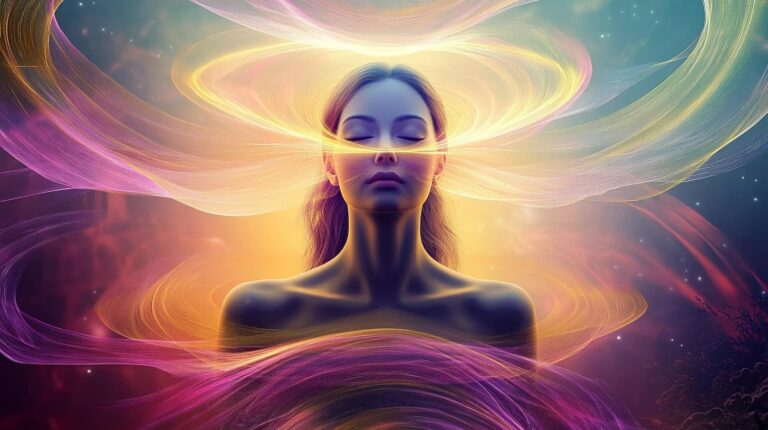
The Principle of Correspondence
This concept suggests that the structures of the microcosm (man, consciousness) reflect those of the macrocosm (the universe).
Grabovoi also evokes this fractal relationship between the individual and the global information structure, insisting on the fact that changing one element in our consciousness can modify external reality.

The Principle of Cause and Effect
In Hermeticism, there is no such thing as chance: every action generates a precise chain of consequences.
This idea is directly linked to much of Grabovoi's work on events control. We could also mention all his teaching on disaster prevention, which is the most accomplished and obvious control technique relative to the chain of events.

While Hermetic principles are based on esoteric and symbolic laws, Grigori Grabovoi puts scientific knowledge into perspective. Other scientists of the 21st century, such as Nassim Haramein, founder of theInternational Space Federationan organisation dedicated to the exploration of unified physics, are joining this new exploration of concepts about matter, reality and the influence of consciousness through research in their field. Initially strongly criticised for their unorthodox positions by their peers, the conclusions of their research show correlations and never cease to intrigue. Some see them as geniuses, others refute their theses: the field of consciousness and the mind continues to divide once again.

Nassim Haramein
Researcher and physicist, founder of the Resonance Science Foundation. He has spent over 30 years researching and discovering connections in physics, mathematics, geometry, cosmology, quantum mechanics, biology, chemistry, anthropology and ancient civilisations. These studies led him to revolutionary theories and patented inventions in unified physics, which are now gaining worldwide recognition.
Haramein's discoveries focus on a fundamental geometry of space that connects us all, from the quantum and molecular scales to cosmological objects in the Universe.
"The intelligence of the universe"
Interview with Nassim Haramein, the path that led him to explore the nature of reality and the workings of the universe, by Tistrya
While Hermetic texts remain philosophical and metaphysical teachings, Grabovoï's work is based on the sciences of information and quantum physics.
Far from a simple theoretical framework, it proposes a structured application of these laws through concrete and intuitive practices such as numerical series and concentration methods that develop our perception and interaction with the world.
A common goal: human emancipation
The objectives of Hermeticism and Grabovoi converge on one essential point: to free man from his limitations.
For Hermeticism:This liberation requires knowledge of the invisible laws of the world and the ability to use them consciously.
For Grabovoi:It is based on the mastery of consciousness as a tool for evolution, enabling us to actively create our own reality.
Although these traditions evolve within different frameworks, they share a common vision: that of a human being capable of influencing reality, of awakening to his own creative power, and of acting in harmony with a universal field of information.
Tantric Buddhism
The Spirit as a vehicle for transformation
Born around 7th century in ancient India before flourishing in the Tibet, Mongolia and the Himalayas,the Vajrayāna - or tantric buddhism - is a branch of Buddhism that literally means "the diamond vehicle". This poetic name symbolises the indestructible and luminous nature of the spiritlike a diamond cannot be altered and reflects reality from every angle.
Le Vajrayāna stands out for its approach intensive and direct. Where traditional Buddhism teaches a slow progression towards awakening over many lives, this tantric form proposes a series of "awakenings" advanced practices to speed up the process and reach a state of awake consciousness in this life. To achieve this, practitioners - often Tibetan monksbut also initiated lay people - use mantrasand complex visualisationsand precise meditative rituals for transforming their perception of reality and harmonising their existence with cosmic principles.
The Spirit in Tantric Buddhism: an infinite ocean of potential
In this tradition,the human spirit is not limited to the fluctuating thoughts and emotions of everyday life. It is seen as a fundamental energya unlimited space of consciousness,It is both immutable and in perpetual motion. This idea is similar to that of a universal information field,It's a world where each individual can draw on to change their perception of the world and, by extension, of reality itself.
An emblematic practice of Vajrayāna is the Dream yogawhere enthusiasts practise realise that they are dreaming in order to manipulate events in the dream world. According to Tibetan teachings, this work teaches us to shape waking reality with the same fluidityby recognising that our perception is malleable.
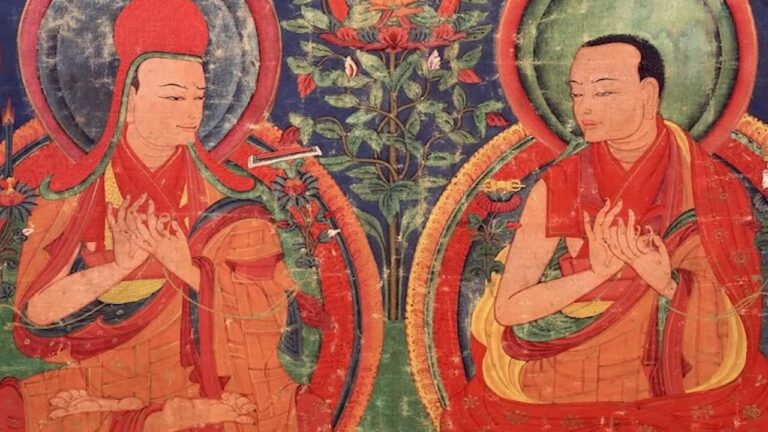
Tantric Buddhism
"Om mani padme hum"
This powerful mantra gives you the strength to free yourself from your ego and return to yourself to find your inner path.. In this form of Buddhism, we find the idea of attaining eternal life by completing the maturation of our being through multiple concrete vibratory practices and a path profoundly connected to others in love and the consideration of reality as directly linked to the progression of our spirit towards its return to a full, purified state, close to the Original.
"The Secret Teachings Of Vajrayāna Buddhism"
par Asangoham
"YOGI (yo-ge) - Rare documentary".
by
Nyishar
A parallel with the teachings of Grabovoi
In the same way as tantric practitioners work their minds to transcend illusions,Grigori Grabovoï proposes an approach in which the human consciousness is a lever for transforming reality. Where Tantric Buddhism uses sacred mantrasand mandalas and mudras (ritual gestures) to structure the mind and align energies,Grabovoi's teaching offers a whole new approach, number series and concentration exercises to achieve a similar objective: harmonising the individual with the fundamental structures of the world and manifesting the desired reality.
Keeping an open mind
These comparisons open up some exciting questions: if different spiritual and contemporary traditions agree that the spirit has the power to influence reality,perhaps we are at the dawn of a rediscovery of this potential, which has been neglected and relegated to esoteric or religious status. Grabovoi's study of the mind opens up fascinating perspectives on the nature of consciousness and its power to interact with reality. By defining the mind as a field of perception and action, he offers a vision in which man becomes an active player in his own evolution and in the world around him. It's not surprising, moreover, that spirit and Spirit are sometimes used to define our thoughts, sometimes to define the Creator.
By means of methodical exercises designed to bring about a more refined understanding of informational structures, Grabovoi proposes a path towards a conscious and controlled transformation of reality - ours is no different from that of any other.
So what's holding you back? It's natural to be sceptical, but it's within your power to remove the barriers you've set yourself to limit your self, and if you've made the journey to the end of this article, you're ready to start experimenting, at your own pace, with number series in your life.
Thousands of people practise the teachings of Grigori Grabovoïi openly or in their secret garden, and if this discipline has been so popular for years, you can be sure that it is because it has offered them concrete benefits, because Grigori Grabovoi did not develop the charisma or the practices of a guru! It is in you and in a common movement towards this awakening that all this enlightened ascent lies, like others who have tried before us to penetrate the mysteries of life.

Michaelle
Chronicler for
Grabovoi-numbers.world

What if you challenged the potential of your spirit?
Expand your field of perception and use our search engine to find the number series that correspond to what you want to interact with.

